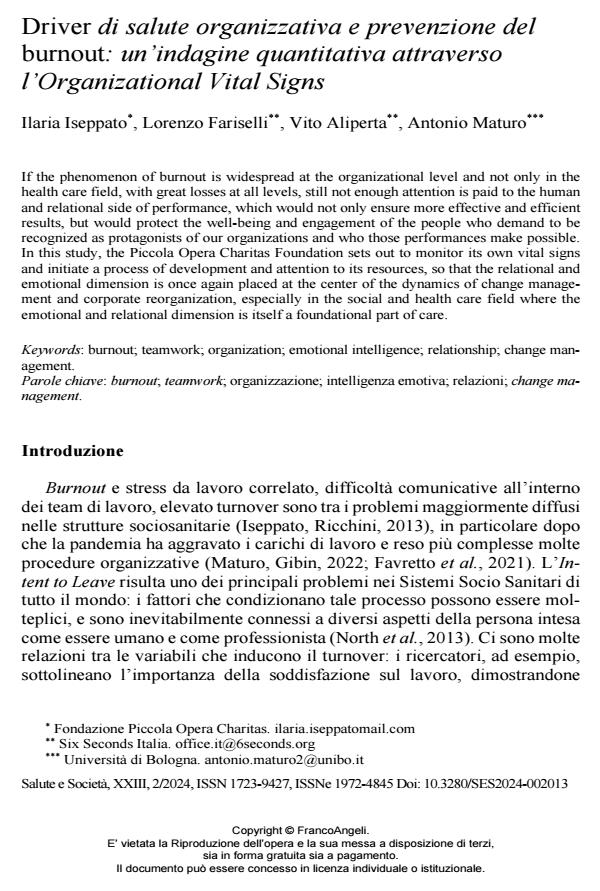Driver di salute organizzativa e prevenzione del burnout: un’indagine quantitativa attraverso l’Organizational Vital Signs
Journal title SALUTE E SOCIETÀ
Author/s Ilaria Iseppato, Lorenzo Fariselli, Vito Aliperta, Antonio Maturo
Publishing Year 2024 Issue 2024/2
Language Italian Pages 15 P. 197-211 File size 249 KB
DOI 10.3280/SES2024-002013
DOI is like a bar code for intellectual property: to have more infomation
click here
Below, you can see the article first page
If you want to buy this article in PDF format, you can do it, following the instructions to buy download credits

FrancoAngeli is member of Publishers International Linking Association, Inc (PILA), a not-for-profit association which run the CrossRef service enabling links to and from online scholarly content.
If the phenomenon of burnout is widespread at the organizational level and not only in the health care field, with great losses at all levels, still not enough attention is paid to the human and relational side of performance, which would not only ensure more effective and efficient results, but would protect the well-being and engagement of the people who demand to be rec-ognized as protagonists of our organizations and who those performances make possible. In this study, the Piccola Opera Charitas Foundation sets out to monitor its own vital signs and initiate a process of development and attention to its resources, so that the relational and emo-tional dimension is once again placed at the center of the dynamics of change management and corporate reorganization, especially in the social and health care field where the emotional and relational dimension is itself a foundational part of care.
Keywords: burnout; teamwork; organization; emotional intelligence; relationship; change man-agement.
- The Emotional Recession: global declines in emotional intelligence and its impact on organizational retention, burnout, and workforce resilience Joshua M. Freedman, Patricia E. Freedman, Daniel Y. Choi, Michael Miller, in Frontiers in Psychology 1701703/2025
DOI: 10.3389/fpsyg.2025.1701703
Ilaria Iseppato, Lorenzo Fariselli, Vito Aliperta, Antonio Maturo, Driver di salute organizzativa e prevenzione del burnout: un’indagine quantitativa attraverso l’Organizational Vital Signs in "SALUTE E SOCIETÀ" 2/2024, pp 197-211, DOI: 10.3280/SES2024-002013